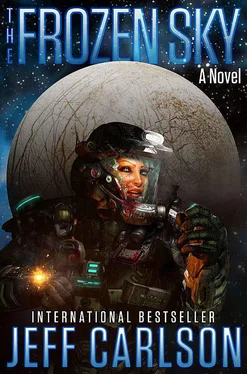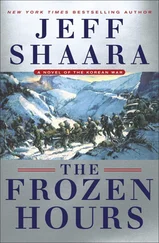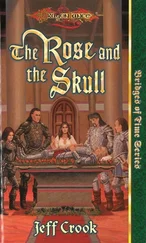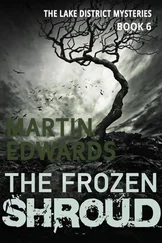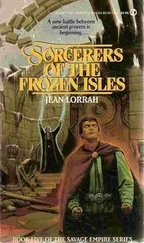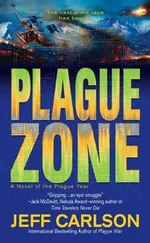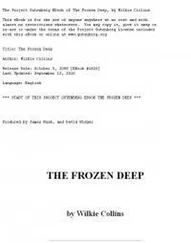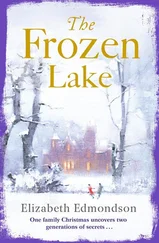They were nearly uniform in size and skin texture. Tom had his crippled arm. Sue and nine others wore scars or bite marks. Otherwise they appeared to be an indistinguishable swarm, yet that was an illusion.
Lost in the ruckus was an astonishing degree of coordination. Not one of the sunfish were ever hit or caught off-guard by the missiles. On the tunnel floor, despite rushing back and forth, they did not trample their comrades.
Vonnie tapped at Metzler’s pad, superimposing a color code on the sunfish. She started with Tom. Near the edge of the group, he struggled with three others to pry loose a desk-sized section of rock, ignoring two more sunfish who hopped into his work space and bounced away in order to throw smaller bits of lava across the tunnel.
“Tom’s diggers are blue,” Vonnie said. “The scavengers who passed through his team are red, this group is yellow, and here’s purple, green, and orange.”
“Twenty-three isn’t divisible by four,” Ash said.
“Green is one short,” Vonnie said. “That’s probably why they paired with orange to do the heavy lifting. Look at what’s happening. They spread apart and mix together, but they constantly reform in the same quartets.”
“We think they have a compulsion toward fours and eights, which is what you’d expect given their physiology,” Metzler said. “Their math is probably based on sums of eight like ours is based on tens.”
“They’re building something,” Vonnie said.
The sunfish weren’t crudely stacking rock against the side of the tunnel. They worked expertly on a column as well-fit as a puzzle, using shape and weight to hold this mass. Each sunfish also left urine or dung in key places. Their waste would freeze like adhesive.
“It’s not a shelter,” Vonnie said. “It looks like a retaining wall, but it’s in the middle of nowhere. Why are they here? There’s no food. No water. The air’s barely any good. Is anything behind that side of the tunnel?”
“We’re not sure. It’s warm. We think there’s a channel of magma not too far away.”
“We need to get a probe close enough to scan through the rock. Maybe there are hot springs on the other side, or bacterial mats, or their home. Do they have an air lock nearby?”
“We don’t know.”
“Right.” Vonnie clenched and unclenched her hands, her nerves flickering with anticipation.
Where were sunfishes’ children? Did they protect them like humans protected their young or were their eggs left to live or die like those of Earth’s frogs and fish? She wanted the answer to be the first possibility. More likely it was the second.
From gene sequencing, X-rays, and her mem files, the biologists said the packs of sunfish included both males and females. The females were physically larger, less in number, and seemed to dominate, calling out more often than the males.
Every one of these physical and sociological aspects were the opposite in humankind. Homo sapiens had typically banned their females from hunting and combat until very recently in history, when technology had provided women with as many advantages as men.
It was another clue to the sunfishes’ mentality. Each time a group left home, they brought enough fertile adults to persevere if their colony was annihilated behind them.
The biologists also knew the sunfish didn’t gestate their unborn because they had no wombs. They laid spawn — hundreds of eggs at once — which the males either sprinkled with milt during the act of laying or soon afterward.
The sunfish might have mating rituals, but they did not make love. They might not have a sex act at all. Equally significant, because they were warm-blooded and semi-aquatic, they probably laid their eggs in hot springs. There was no sunlight to incubate their spawn. They relied on the environment as part of their reproductive cycle, but the environment was catastrophic.
Metzler theorized that the females felt no attachment to their spawn, only bonding with successful newborn. They were predisposed to abandon their eggs.
Nature seemed to have compensated. If the gene smithing of the sunfishes’ hormones was correct, their females laid spawn as often as six times in an Earth year. That was a staggering birth rate. It could have meant disastrously high population pressures, except most of the eggs never became adults. Maybe they ate their failed spawn or performed infanticide to weed out their weaker offspring.
That doesn’t mean they’re not affectionate , Vonnie told herself. The sunfish huddled for warmth, cared for each other’s wounds and infections, and there was poetry in the fluid, detailed ruffling of their arms and bodies.
Did they know joy?
They seemed well-suited for a love of life. They moved like birds or dolphins. They built and succeeded. But they were short-lived. Their telomeres indicated an average lifespan of no more than twenty years.
By now, ESA and NASA biologists owned samples from seventeen different sunfish, dozens of bugs, and any number of bacterial mats and fungi. Most of the blood and tissue had been gathered from Vonnie’s suit. Five more blood pricks had been secured by NASA’s probes during the past week, and it was a toss-up which set of samples had caused the loudest uproar.
The botanists, entomologists, exobiologists, and gene smiths each had different arguments that their results were the most spectacular.
Europan DNA wasn’t wildly distinct from Earth DNA. The sunfish genome was composed of sequences using the same four nucleic acids as terrestrial lifeforms. The one difference was in their blast scores for hemoglobin. The sunfish had evolved with a remarkable concentration of iron atoms in this globular protein, which allowed them to carry extra oxygen through their bloodstream.
The sunfish also had little genetic variation from each other. They were nearly clones, like cheetahs, which was another species that had been reduced to a bare minimum of breeding pairs in its past.
“Tell me what happened with Tom,” Vonnie said.
“It was hours later,” Metzler said, forwarding through his sim. “The sunfish ran out of material for their wall. They sent scouts into the side channels, including his team. Tom seems to go farther than anyone else. They might consider him expendable because of his injuries. Maybe he’s earned a leadership role for being so resilient. I don’t think most of them would have survived losing part of an arm.”
“They’d eat him,” Ash said.
“Yeah.”
Metzler’s recording showed Tom leap into view at a steep angle from the tunnel floor to its ceiling. He flew with his arms spread, screeching at the space ahead of him. Then he landed on a crag in the rock and stuck to it, bunching his arms with his body poised like a rocket, ready to jump again.
He’d obviously sensed 112, which sat twenty meters away. In flight, Tom had wavered in a clockwise motion, bending back each of his arm tips, including his stub. Curling inward might have pantomimed grabbing at the probe or bringing an object to his beak. This motion was a gesture more like releasing something.
“That means ’Hello’ or ’Yes’ depending on the context,” Metzler said. “We found the same pose at the center of every wall of carvings. It’s a starting place. The sunfish don’t read in straight lines like we do. We think they read outward from the ’Hello’ stance.”
“I saw Pärnits’ report,” Vonnie said absently, staring at the display. Then she glanced at Metzler, wondering why she’d mentioned his friend’s name.
He knew she was also dating Pärnits. Was the instinct to test potential mates so innate that it had spoken for her? Vonnie wasn’t coy, and she wasn’t mean, and yet she’d just undermined Metzler by giving credit to Pärnits.
Читать дальше
